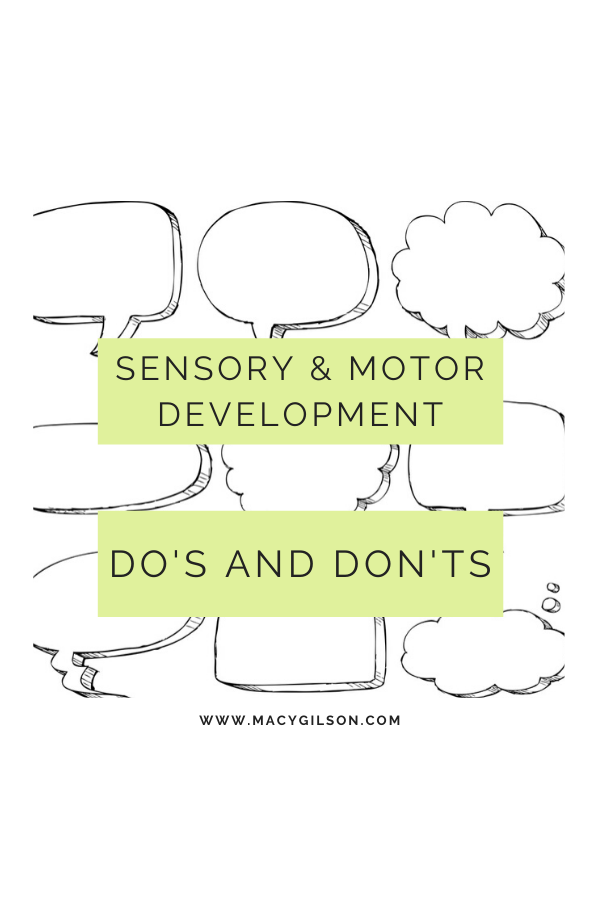Sensory and Motor Development
April is #OTAwarenessMonth and what better way to celebrate than to have an occupational therapist (OT) share more about this amazing field! Emma Mace, OTD/S graduates from Belmont University this May with a doctorate in occupational therapy. Her current experience is working with children in an outpatient pediatric clinic as well as creating a sensory education curriculum for children living in a group home to increase emotional regulation skills.
Do's:
Encourage activities that use both hands at one time. This works on a skill called bilateral coordination- which is super important but can be difficult for some kids. As early as you can, introduce activities such as stringing large beads, pulling things apart, using one hand to stabilize while the other builds. You start to refine this skill and the pathways that connect both sides of the brain to the hands and to each other…just casual brain change happening- no big deal!
Encourage different positions for writing/drawing. Some of my favorite are on their tummy and on a vertical surface (like an easel or the wall). Drawing on their stomach is going to strengthen the core, neck, and shoulders. A vertical surface promotes the strengthening of the wrist which is key for developing a mature grasp. It is really hard to draw with a fisted hand with your paper taped to the wall!
Use PlayDoh or other dough mediums! While it may be messy and slightly disgusting if these things go towards the mouth, dough is a great way to strengthen hands & work on fine motor skills. Making snakes, pinching the dough, rolling into little balls using just your thumb and first two fingers, all are really easy and fun ways to work on those skills. So many resources exist for how to use PlayDoh as more than just creative play.
Don'ts
Spend a ton of money on fine motor or sensory toys. Often times if you put those two words in front of something- the price goes up exponentially. The best fine motor toys I have ever used when working with kids were made from things I had around the house! For example, an old spice jar with a sprinkle lid and some toothpicks work great to promote a pincer grasp, in hand manipulation skills, and visual motor skills. Eye droppers with colored water can promote a pincer grasp, hand strengthening, and graded muscle control. Pinterest has some awesome ideas!
Let your child skip crawling. I have heard from many parents that their child didn't crawl and went straight to pulling up and walking. While this may seem like an advanced skill, crawling is imperative in the development of fine motor, visual motor, gross motor and sensory skills. For example, crawling helps integrate reflexes, strengthen the shoulder girdle and form the arches for the hand. Crawling activities are great throughout early childhood because they increase core and shoulder strength, which trickle down to those precious fine motor and attention skills.
Try to solve sensory problems on your own. If you notice a lot of red flags when it comes to your child handling different sensory experiences (hates or overly craves touch, sensitivity to swinging, excessive gagging when eating, extreme clumsiness, etc.) it is probably time to consult your pediatrician and advocate for an occupational therapy evaluation. Sensory interventions are best done under the guidance of a licensed OT, and preferably one with advanced training in sensory integration.
To learn more from Emma, follow @_emma_mace on Instagram!


